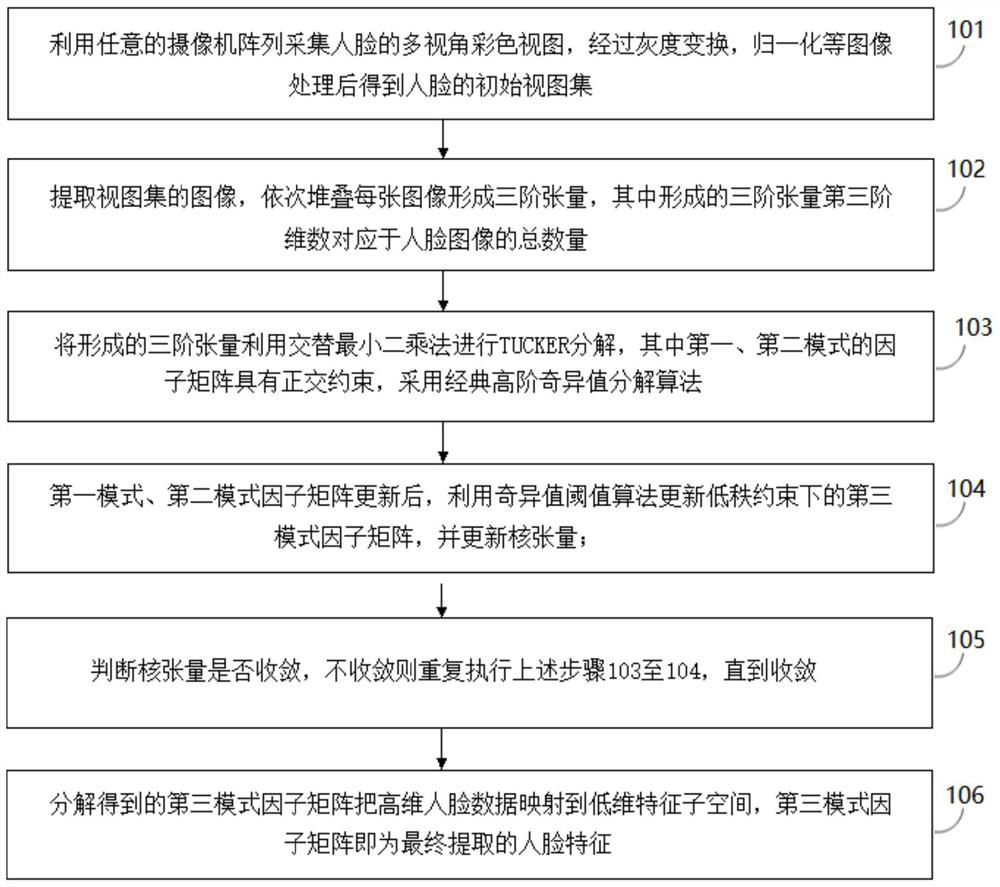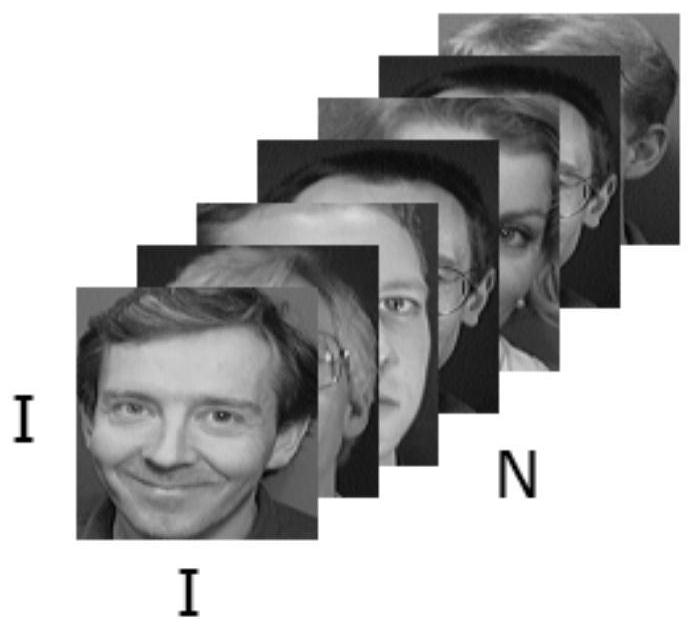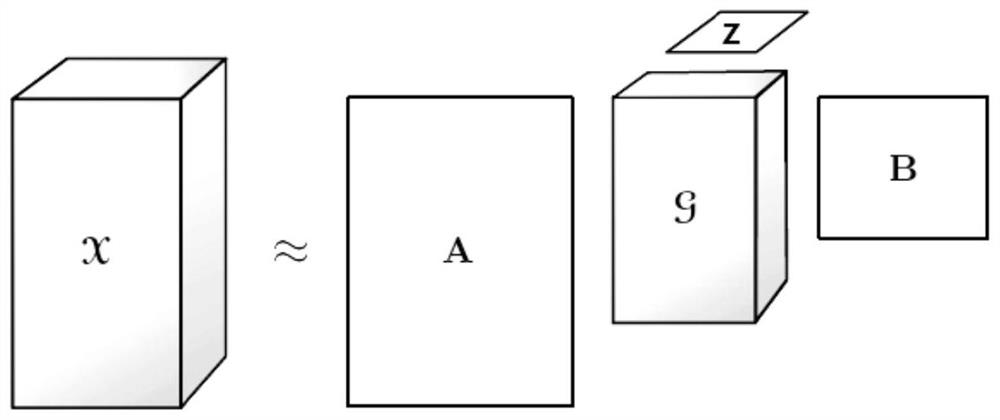A Face Feature Extraction Method Based on Heterogeneous Tensor Decomposition
A tensor decomposition and face feature technology, applied in the field of face feature extraction, can solve problems such as the inability to make good use of data internal structure information, and achieve the effect of avoiding tedious steps and improving the speed of feature extraction.
- Summary
- Abstract
- Description
- Claims
- Application Information
AI Technical Summary
Problems solved by technology
Method used
Image
Examples
example
[0071] The AT&T ORL dataset [7] includes 40 different people, 10 images of each face, so a total of 400 face images. All images are collected by people standing in front of a black background, under different lighting, and under different facial expressions (eyes open / closed, smiling / not smiling), and facial details (with glasses / without glasses). In our experiments, each image is resized to 32X 32 pixels.
[0072] Evaluation Criteria
[0073] Clustering accuracy accuracy(AC)
[0074] Clustering normalized mutual information normalized mutual information (NMI) [8]
[0075] Comparison Algorithm
PUM
 Login to View More
Login to View More Abstract
Description
Claims
Application Information
 Login to View More
Login to View More - R&D
- Intellectual Property
- Life Sciences
- Materials
- Tech Scout
- Unparalleled Data Quality
- Higher Quality Content
- 60% Fewer Hallucinations
Browse by: Latest US Patents, China's latest patents, Technical Efficacy Thesaurus, Application Domain, Technology Topic, Popular Technical Reports.
© 2025 PatSnap. All rights reserved.Legal|Privacy policy|Modern Slavery Act Transparency Statement|Sitemap|About US| Contact US: help@patsnap.com



